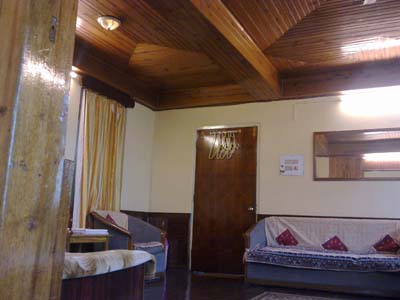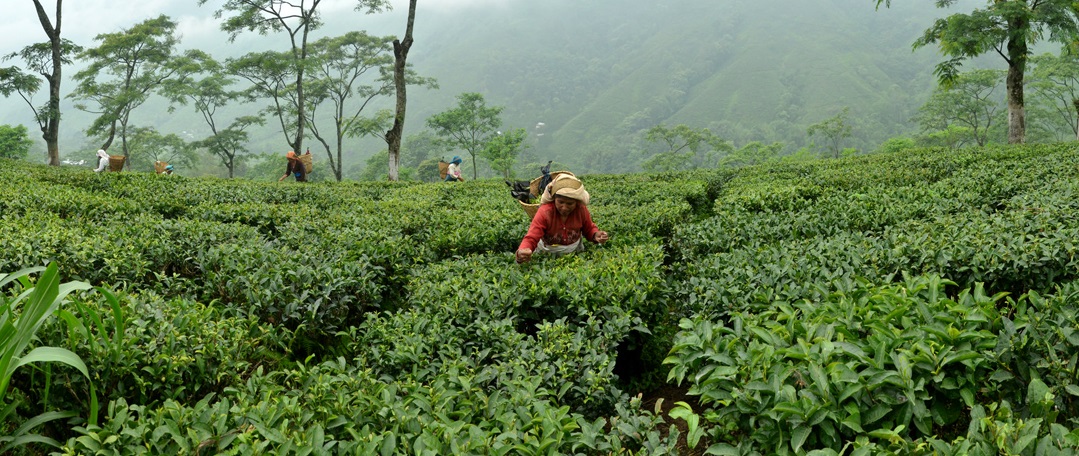Darjeeling - Queen of the hills
Household name because of its varieties of teas, Darjeeling is a hill station with vast expanses of tea estates and Tibetan influence in their craft, culture and cuisine.
A previous summer capital of India under the British Raj, Darjeeling has come off age as one of the most sought after hill stations in India. Famous for its beautiful tea plantations and the quality of Darjeeling tea, Darjeeling is a delight for all kind of tourists. The toy train established back in 1881, still runs in this part and is also one of the UNESCO World Heritage sites. Beautiful colonial architecture including mansions and churches dot this little beautiful town.
Filled with people from Tibet, Nepal, nearby Indian states and the Gorkhas, Darjeeling is brimming with cultural diversity. The third highest peak in the world and the highest in India, the Kanchenjunga peak is clearly visible from here and you can enjoy a panoramic view of the peak. Some of Darjeeling's most popular attractions include monasteries, botanical gardens, a zoo, and the Darjeeling-Rangeet Valley Passenger Ropeway cable car which happens to be the longest Asian cable car. Darjeeling is a wonderful place to walk around and explore the tea estates, villages, and markets.
About Darjeeling
Known the world over as the Queen of the Hills. Darjeeling is as unique as it is diverse. For travellers arriving from the Indian plains, the cool climate of Darjeeling provides welcomes relief and delightful experiences around every corner. Situated at an average height of 7000 feet (2130 metres) above sea level, this beautiful town with its colonial charm and contemporary culture shelters in the shadow of Kangchenjunga's snow-covered peaks. This magnificent mountain range, whose name means.The Five Treasures of the Snows in Tibetan on account of its peaks is also written as Kangchendzonga and Kanchenjunga.
Darjeeling is at once old and new. From its modest beginnings in 1835 as hill station and tea distribution centre, this now cosmopolitan town offers modern amenities, first-class hotels, cinema halls and comprehensive shopping centres. It is also home to some of India most famous boarding schools. Yet, just a few miles from the crowded bazaar you can find villagers living a slower agricultural life in touch with the season : ploughing hillside terraces by hand, constructing colourful houses on steep cliffs, hollowing out bamboo pipes for irrigation and calling on faith healers in times of distress.
A Brief History
The name Darjeeling likely derives from the Tibetan words Dorje, meaning thunderbolt and ling, meaning place or land the land of the thunderbolt This was once the name of a Buddhist monastery situated on top of what is now Observatory Hill, a name which over time came to refer to the whole surrounding area.
Looking ad Darjeelings bustling streets today, its hard to imagine that in 1839 there were not more than 20 families in the district. Darjeeling has Dr Campbell, a British official who became the station superintendent, to thank for his 22 years of devotion to developing the region at that time. From these humble beginnings, Darjeeling has today grown into one of India premier hill stations, visited by tourists from across India and from all over the world.
The District of Darjeeling
The Darjeeling District of West Bengal has an approximate area of 12,000 square miles According to the 2001 Census of India, the district population is 1.6 million, with 67% of that number living in rural areas. The literacy rate is 81% for men and 64% for women.
The district extends from the topical Tarai plains, at about 300 feet (91 metres) above sea level, to the cool heights of the Sandakphu-Phalut ridge at 12,000 feet (3658 metres). Darjeeling borders on Sikkim to the north, Bhutan to the east and Nepal to the west, In addition to its namesake town of Darjeeling, the district also includes the hill resorts of Kurseong and Kalimpong at 4864 (1482 metres) and 4100 feet (1249 metres) respectively.
The People of Darjeeling
The original inhabitants of the Darjeeling hills are the Lepcha. They speak a Tibeto-Burman language, which they call Roaring, and were originally the indigenous people of both Darjeeling and Sikkim. The majority of Darjeelings contemporary population are the culturally Nepali Gorkhas, who speak Nepali (also called Gorkhali), along with their own mother tongues, such as Gurung, Limbu, Mangar, Newar, Rai, Sherpa, Tamang and Thami. the Sherpa community is famous for their courage and stamina in mountaineering, most notably Tenzing Norgay Sherpa, who first submitted Mount Everest along with Sir Edmund Hillary. Tenzing Norgay spent much of his life in Darjeeling and eventually died there. Throughout the hills, you will also meet Bengalis, Bhutias, Biharis, Marwaris, Punjabis, Sindhis, Gujaratis and Tibetans. People from all of these diverse communities come together in Darjeeling to create a lively cultural landscape full of festivals, rituals, songs and dances waiting to entertain you.
Religion
Hindus and Buddhists form the religious majority, with notable Muslim and Christian minorities. Darjeeling is full of temples and monasteries where you can enjoy a peaceful moment in the company of deities, as well as churches, gurudwaras and mosques.
Languages
Bengali, Hindi, English, Nepali (Gorkhali) and Tibetan are spoken in different areas throughout the hills. Most people, including guides and hotel attendants, are multilingual, speaking English, Nepali and some Bengali and Hindi.
Climate and Tourist Seasons
Darjeeling has four seasons: Winter, Spring, Monsson (Summer) and Autumn.
After a short but cold winter, spring arrives as a welcome gift. Gentle mists mingle with occasional light rains to replace the heavy winter fog, Although dotted with clouds, the sky is still clear enough to create a succession and calm days. It is during these months April to June that Darjeeling enjoys its first tourist season. The whole town is ablaze with floral colour; in every garden, from small to large, rhododendrons, magnolias, gladioli, tiger lilies, hydrangeas, sweet peas, cornflowers, roses and dahlias unite to make Darjeeling bloom. Major mountaineering expeditions also set out as this time of year to conquer high peaks.
The Monsoon usually begins in late June and is mostly over by the end of August, with about 100 inches of rain in total during these months. July commonly sees the heaviest rainfall.
The cool evenings of Autumn start creeping in during September, bringing with them Darjeelings second tourist season, which lasts until early November. the weather during these months is simply splendid. From valley floor to ridge top, green hills slope up to meet the blue sky on crisp, clear days, and the mighty Kangchenjunga range towers in the background. These are magical months for Darjeeling, with special events in abundance carnivals, dog shows, dramatic performances and live music concerts.
The great Hindu festivals of Dasain (Dashera) and Tihar (Diwali) are also observed at this time of year. At Dasain, the temples are full of devotees making colourful offerings, and the bazaar swells with families dressed in their holiday best. Darjeeling has a unique way of celebrating Tihar, popularly known as the Festival of Lights. At sunset, young people from all backgrounds gather with their friends and musical instruments, and venture from door to door singing songs and dancing through the night in exchange for small donations, Local shops are adorned with bright colours, and oil lamps are lit around their perimeters. This is a particularly exciting time to visit Darjeeling, but be aware that hotels are usually busy. If you don't mind the cold and are seeking a quiet holiday, visiting Darjeeling in the Winter is an excellent choice. The temperature can drop to freezing, and heavy fogs often envelop the town, making the occasional rainstorms, while snow at the end of December can make for a traditional and beautiful White Christmas.
Offered Services
Travel Arrangements, Accomodation,Pure Jain Food.

Travel Arrangements

Accommodation


